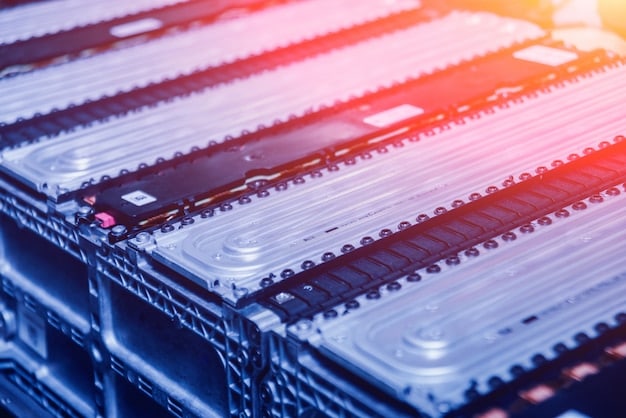DirectStorage 2.0: Will Faster Load Times Finally Arrive?

DirectStorage 2.0 aims to revolutionize PC game loading times by leveraging high-speed NVMe SSDs and bypassing traditional CPU bottlenecks, but its widespread adoption and consistent performance gains remain to be seen.
The promise of blazing-fast loading times in PC games has been dangling in front of gamers for years. Now, with DirectStorage 2.0: Will It Finally Deliver on Faster PC Game Load Times?, the technology aims to get here, and we want to dive in and see if it holds the potential to revolutionize our gaming experience.
What is DirectStorage 2.0?
DirectStorage is a technology developed by Microsoft that allows games to directly access the storage device (typically an NVMe SSD) without going through the CPU for decompression. This direct path significantly reduces latency and speeds up the loading of game assets.
Think of it like this: traditionally, when a game needs to load a texture, model, or sound, the request goes to the CPU. The CPU then fetches the data from the storage device, decompresses it, and passes it along to the GPU. This process can be slow and creates a bottleneck, especially with the increasing size and complexity of game assets.
DirectStorage bypasses the CPU for decompression, allowing the GPU to directly handle the task. This not only speeds up loading times but also frees up CPU resources for other tasks, potentially improving overall game performance.
Key Benefits of DirectStorage 2.0
DirectStorage 2.0 builds upon the foundation of the original DirectStorage, introducing several enhancements and optimizations. Here are some key benefits:
- Reduced CPU Overhead: By offloading decompression to the GPU, DirectStorage 2.0 significantly reduces the CPU’s workload, preventing bottlenecks and improving overall system responsiveness.
- Faster Loading Times: Games can load assets much faster, reducing the time spent waiting on loading screens.
- Improved Streaming Performance: DirectStorage 2.0 enables smoother streaming of game assets, reducing stuttering and improving the overall visual experience.
- Enhanced Visual Fidelity: With faster loading times and improved streaming, games can utilize higher-resolution textures and more complex models, resulting in enhanced visual fidelity.
In essence, DirectStorage 2.0 promises a faster, smoother, and more visually impressive gaming experience by optimizing the way data is accessed and processed.
In conclusion, DirectStorage 2.0 represents a significant step forward in optimizing game loading and asset streaming by leveraging the power of modern NVMe SSDs and GPUs.

The Promise of Faster Load Times
The most immediate and noticeable benefit of DirectStorage 2.0 is the potential for significantly faster load times. Gone are the days of twiddling your thumbs while waiting for a game to load; DirectStorage 2.0 aims to make those loading screens a thing of the past.
Traditional loading processes involve the CPU handling decompression, which can be a bottleneck. DirectStorage 2.0 offloads this task to the GPU, allowing for parallel processing and much faster decompression.
Imagine launching your favorite game and being able to jump straight into the action without any noticeable delay. This is the promise of DirectStorage 2.0, and while the reality may not always be quite that seamless, the potential for improvement is significant. Initial tests have shown a drastic reduction in loading times, with some games loading in a matter of seconds compared to minutes on traditional systems.
How Much Faster Can We Expect?
The actual speed gains will vary depending on several factors, including the game itself, the storage device used, and the overall system configuration. However, early benchmarks and demonstrations have shown promising results.
- Synthetic Benchmarks: Synthetic benchmarks have demonstrated a substantial reduction in loading times, with some tests showing a 40% to 70% improvement compared to traditional storage methods.
- Real-World Games: In real-world games, the improvements are less dramatic but still noticeable. Some games have shown loading time reductions of 20% to 50%, while others may see smaller gains.
- Future Optimization: As developers become more familiar with DirectStorage 2.0 and optimize their games accordingly, we can expect to see even greater improvements in loading times.
While DirectStorage 2.0 may not completely eliminate loading screens, it has the potential to make them much shorter and less intrusive, leading to a more immersive and enjoyable gaming experience.
In summary, DirectStorage 2.0 offers the tantalizing prospect of quicker game loading, minimizing downtime and optimizing the gaming experience.
Hardware Requirements and Compatibility
While DirectStorage 2.0 offers exciting possibilities, it’s important to note that it also comes with specific hardware requirements and compatibility considerations. Not all systems will be able to take full advantage of this technology.
First and foremost, DirectStorage 2.0 requires an NVMe SSD. Traditional SATA SSDs and mechanical hard drives simply cannot provide the necessary speeds to fully utilize DirectStorage’s capabilities. This means that if you’re still using an older storage device, you’ll need to upgrade to an NVMe SSD to experience the benefits of DirectStorage 2.0.
Additionally, DirectStorage 2.0 relies on GPU-based decompression. This means that you’ll need a compatible GPU to handle the decompression tasks. Both NVIDIA and AMD have released GPUs that support DirectStorage, but it’s important to check the specifications of your particular GPU to ensure compatibility.
Minimum System Requirements
Here’s a general overview of the minimum system requirements for DirectStorage 2.0:
- NVMe SSD: A high-speed NVMe SSD with PCIe Gen4 or higher is recommended.
- Compatible GPU: An NVIDIA RTX 2000 series or later, or an AMD Radeon RX 6000 series or later, is required.
- Operating System: Windows 10 or Windows 11 is required.
- DirectX 12: DirectX 12 must be supported by both the GPU and the game.
It’s also worth noting that even if your system meets the minimum requirements, you may not see the full benefits of DirectStorage 2.0 if your hardware is not well-optimized. For example, using a lower-end NVMe SSD or an older GPU may limit the performance gains.
In conclusion, while DirectStorage 2.0 holds significant promise, it’s essential to assess your system’s hardware capabilities and make sure you meet the minimum requirements to fully utilize its benefits.

Software Support and Game Development
The effectiveness of DirectStorage 2.0 hinges not only on hardware compatibility but also on software support and game development practices. Games need to be specifically designed and optimized to take advantage of DirectStorage’s capabilities.
DirectStorage 2.0 is not a magic bullet that automatically improves loading times for all games. Developers need to actively implement DirectStorage into their games, which requires additional development effort. This includes restructuring game assets, optimizing data layouts, and integrating the DirectStorage API into the game engine.
The adoption of DirectStorage 2.0 has been relatively slow due to the complexities involved. However, as more developers become familiar with the technology and see its potential, we can expect to see more games supporting DirectStorage in the future.
Challenges for Game Developers
Implementing DirectStorage 2.0 presents several challenges for game developers:
- Development Effort: Integrating DirectStorage requires significant development effort, including restructuring game assets and optimizing data layouts.
- Compatibility: Developers need to ensure that their games are compatible with a wide range of hardware configurations, including systems that do not support DirectStorage.
- Optimization: Achieving optimal performance with DirectStorage requires careful optimization and testing.
Despite these challenges, many game developers are excited about the potential of DirectStorage and are actively working to incorporate it into their games. As more games begin to support DirectStorage, we can expect to see a gradual improvement in loading times and overall game performance.
In summary, for DirectStorage 2.0 to reach its full potential, there must be greater software implementation and developers need to be onboard.
DirectStorage 2.0 vs Traditional Loading Methods
To fully appreciate the benefits of DirectStorage 2.0, it’s helpful to compare it to traditional loading methods. Traditional loading processes have several limitations that DirectStorage aims to address.
In a traditional loading process, when a game needs to load an asset, the request goes to the CPU. The CPU then fetches the data from the storage device, decompresses it, and passes it along to the GPU. This process can be slow and creates a bottleneck, especially with the increasing size and complexity of game assets.
DirectStorage bypasses the CPU for decompression, allowing the GPU to directly handle the task. This significantly reduces latency and speeds up the loading of game assets.
Advantages of DirectStorage 2.0
Here’s a comparison of the advantages of DirectStorage 2.0 over traditional loading methods:
- Reduced CPU Overhead: DirectStorage offloads decompression to the GPU, reducing the CPU’s workload.
- Faster Loading Times: Games can load assets much faster, minimizing loading screens.
- Improved Streaming Performance: DirectStorage enables smoother streaming of game assets, reducing stuttering.
- Enhanced Visual Fidelity: With faster loading times, games can use higher-resolution textures and complex models.
By reducing CPU overhead, speeding up loading times, improving streaming performance, and enhancing visual fidelity, DirectStorage 2.0 offers a significant improvement over traditional loading methods. However, it’s important to note that the actual performance gains will depend on the game and the system configuration.
In this comparison, DirectStorage 2.0 offers a substantial boost over traditional methods, provided that both the hardware and software are fully compliant.
Future Prospects and Industry Impact
Looking ahead, the future of DirectStorage 2.0 appears promising. As the technology matures and becomes more widely adopted, we can expect to see further improvements in loading times and overall game performance.
One potential area for improvement is the integration of DirectStorage with other technologies, such as cloud gaming. By combining DirectStorage with cloud gaming platforms, it may be possible to stream high-quality games with minimal latency, even on low-end devices.
Another potential development is the use of DirectStorage in other applications besides gaming. For example, DirectStorage could be used to accelerate the loading of large datasets in scientific simulations, video editing software, and other demanding applications.
Potential Industry Impact
- Faster Game Development: DirectStorage could simplify game development by enabling developers to use larger and more complex assets without worrying about loading times.
- Improved User Experience: Gamers will benefit from shorter loading times, smoother gameplay, and enhanced visual fidelity.
- New Gaming Experiences: DirectStorage could enable new types of gaming experiences that were previously impossible due to loading time limitations.
As DirectStorage 2.0 becomes more prevalent, it has the potential to transform the gaming landscape and open up new possibilities for both developers and players.
Ultimately, DirectStorage 2.0 could reshape the gaming experience by accelerating game development and improving user experiences.
| Key Point | Brief Description |
|---|---|
| 🚀 Faster Load Times | Reduces game loading times significantly. |
| 💻 Hardware Requirements | Requires NVMe SSD and compatible GPU. |
| 🎮 Game Development | Needs specific game optimization for best results. |
| 💡 Future Potential | Could transform gaming and other high-data applications. |
Frequently Asked Questions
▼
DirectStorage 2.0 is a Microsoft technology designed to reduce game loading times by allowing the GPU to handle data decompression, bypassing the CPU bottleneck.
▼
An NVMe SSD, a compatible GPU (NVIDIA RTX 2000 series or later, or AMD Radeon RX 6000 series or later), and Windows 10 or 11 are needed.
▼
No, games must be specifically optimized for DirectStorage. Older games or those not updated may not see any improvement.
▼
Loading time reductions can vary. Some games show a 20% to 50% improvement, while others may experience smaller gains depending on optimization.
▼
While primarily designed for gaming, DirectStorage’s technology could be applied to other applications needing fast loading of large datasets.
Conclusion
In conclusion, DirectStorage 2.0: Will It Finally Deliver on Faster PC Game Load Times? definitely holds a lot of potential, assuming it’s implemented with the right hardware and the games are properly optimized for it. DirectStorage 2.0 could represent a paradigm shift in how games are loaded and streamed, offering players a more immersive and enjoyable gaming experience.





